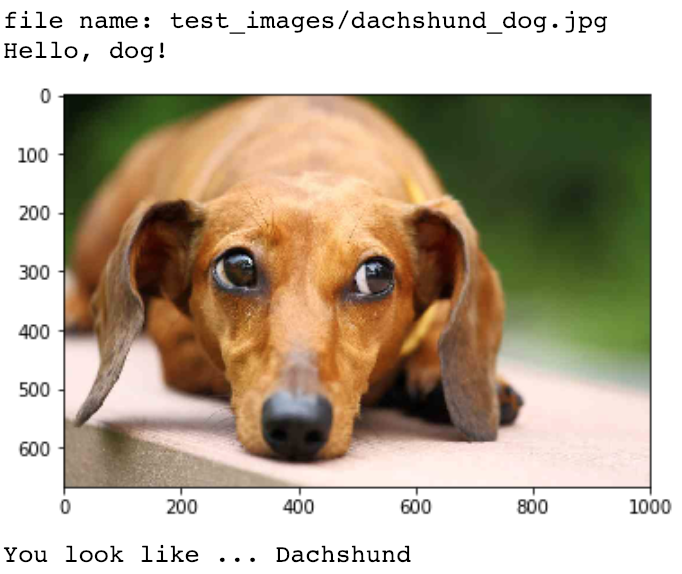Dog breed classifier built with Convolutional Neural Networks (CNN). Given an image of a dog, the algorithm will identify an estimate of the canine’s breed. If supplied an image of a human, the code will identify the resembling dog breed.
The dataset contains 133 total dog categories and has 8351 total dog images. The dataset is provided by Udacity and it can be downloaded from this link. We use OpenCV's implementation of Haar feature-based cascade classifiers to detect human faces in images.
After experimenting with several CNN models, the final model is created with Transfer Learning. The base model is ResNet-50 and it is trained 20 epochs. It achieved 80.02% test accuracy.
- Clone the repository and navigate to the downloaded folder.
git clone https://github.com/TetsumichiUmada/dog_app.git
cd dog_app
-
Download the dog dataset. Unzip the folder and place it in the repo, at location
path/to/dog_app/dogImages. -
Download the human dataset. Unzip the folder and place it in the repo, at location
path/to/dog-project/lfw. If you are using a Windows machine, you are encouraged to use 7zip to extract the folder. -
Donwload the VGG-16 bottleneck features for the dog dataset. Place it in the repo, at location
path/to/dog-project/bottleneck_features. -
(Optional) If you plan to install TensorFlow with GPU support on your local machine, follow the guide to install the necessary NVIDIA software on your system. If you are using an EC2 GPU instance, you can skip this step.
-
(Optional) If you are running the project on your local machine (and not using AWS), create (and activate) a new environment.
- Linux (to install with GPU support, change
requirements/dog-linux.ymltorequirements/dog-linux-gpu.yml):
conda env create -f requirements/dog-linux.yml source activate dog-project- Mac (to install with GPU support, change
requirements/dog-mac.ymltorequirements/dog-mac-gpu.yml):
conda env create -f requirements/dog-mac.yml source activate dog-projectNOTE: Some Mac users may need to install a different version of OpenCV
conda install --channel https://conda.anaconda.org/menpo opencv3- Windows (to install with GPU support, change
requirements/dog-windows.ymltorequirements/dog-windows-gpu.yml):
conda env create -f requirements/dog-windows.yml activate dog-project - Linux (to install with GPU support, change
-
(Optional) If you are running the project on your local machine (and not using AWS) and Step 6 throws errors, try this alternative step to create your environment.
- Linux or Mac (to install with GPU support, change
requirements/requirements.txttorequirements/requirements-gpu.txt):
conda create --name dog-project python=3.5 source activate dog-project pip install -r requirements/requirements.txtNOTE: Some Mac users may need to install a different version of OpenCV
conda install --channel https://conda.anaconda.org/menpo opencv3- Windows (to install with GPU support, change
requirements/requirements.txttorequirements/requirements-gpu.txt):
conda create --name dog-project python=3.5 activate dog-project pip install -r requirements/requirements.txt - Linux or Mac (to install with GPU support, change
-
(Optional) If you are using AWS, install Tensorflow.
sudo python3 -m pip install -r requirements/requirements-gpu.txt
-
Switch Keras backend to TensorFlow.
- Linux or Mac:
KERAS_BACKEND=tensorflow python -c "from keras import backend" - Windows:
set KERAS_BACKEND=tensorflow python -c "from keras import backend"
- Linux or Mac:
-
(Optional) If you are running the project on your local machine (and not using AWS), create an IPython kernel for the
dog-projectenvironment.
python -m ipykernel install --user --name dog-project --display-name "dog-project"
- Open the notebook.
jupyter notebook dog_app.ipynb
- (Optional) If you are running the project on your local machine (and not using AWS), before running code, change the kernel to match the dog-project environment by using the drop-down menu (Kernel > Change kernel > dog-project). Then, follow the instructions in the notebook.
